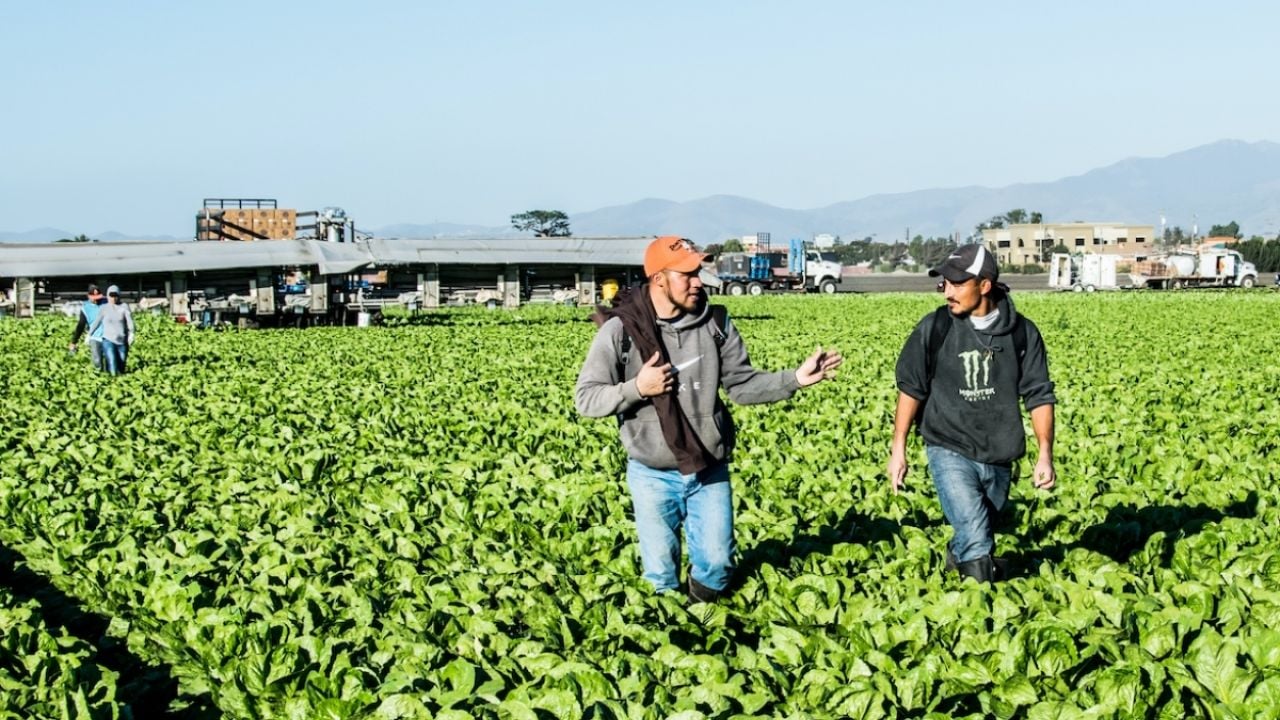
As the coronavirus pandemic continues, farmworkers are risking their lives to feed us. So why are some officials in the Trump administration and some Republicans in Congress trying to cut farmworkers’ pay?
National Public Radio and The Wall Street Journal report that White House officials may cut the minimum wage for some seasonal farmworkers who travel to the U.S. on guest worker visas. If the idea becomes policy, the proposal would effectively reduce the minimum wage paid to these farmworkers to $8.34 an hour in states that do not have higher minimum wages.
Under current law, employers must pay the higher of either the applicable state or federal minimum wage; the prevailing wage in that region and occupation, as determined by the Department of Labor; or the regional average farm wage found in a survey conducted by the Department of Agriculture.
Depending on the state, changes to this calculation could reduce hourly wages anywhere from $2 to $5 an hour. For example, the minimum wage for migrant workers in North Carolina would fall by nearly $4, according to Farmworker Justice.
Republicans in Congress have championed a similar proposal. H.R. 6083, the Labor Certainty for Food Security Act, would also change how wages are calculated to pay farmers 115 percent of the federal minimum wage, or of the state minimum wage, if it is higher.
Reps. Ted Yoho (R-Fla.), Glenn Thompson (R-Pa.), Andy Barr (R-Ky.), Neal Dunn (R-Fla.), Ted Budd (R-N.C.), Vicky Hartzler (R-Mo.), Michael McCaul (R-Texas), Mike Kelly (R-Pa.) and Ralph Norman (R-S.C.) are among the bill’s co-sponsors.
The American Farm Bureau Federation defended the proposal, telling The Wall Street Journal it was “not right” to require farmers to pay the higher wage during a pandemic. Unlike seasonal farmworkers, produce growers and other farmers represented by the Farm Bureau will be eligible for $16 billion in government relief announced Friday by USDA.
The Trump administration is taking other steps to help farmers, including temporary rules that make it easier to hire migrant workers who are already in the U.S. but may be working on other farms and speeding up the visa process for guest workers.
But the administration has not taken steps to protect farmworkers from COVID-19, who are getting sick just as the harvest season is about to begin. Although some farmworkers are able to spread out in fields, many migrant and seasonal workers are housed and transported in ways that increase the likelihood that the virus will spread. Migrant and seasonal farmworkers are often housed in hotels that have been converted to function like dormitories.
Despite the critical role food and farm workers play in our economy, few receive protections from the COVID-19 virus.
Some food and farm companies have provided personal protective equipment, but the Occupational Safety and Health Administration, or OSHA, and the Department of Agriculture have not yet issued emergency standards requiring food companies to meet safety guidelines developed by the Centers for Disease Control and Prevention.
What’s more, many food and farm workers are not eligible for free COVID-19 testing. If they do become sick, many are ineligible for paid sick leave, increasing the likelihood that they will infect their co-workers. The Families First Act passed by Congress requires some employers to provide two weeks of paid sick leave, but many food and farm companies are exempt from the requirement.
Although they have been deemed essential workers, farm and food workers do not receive hazard pay to reflect the risks they face. Because many are undocumented, many are ineligible for health benefits other workers enjoy, such as Medicaid. As a result, undocumented workers are not only denied hazard pay and sick pay but also lack access to health care, increasing the likelihood that the virus will spread as they continue to work.
Replacing sick farmworkers will not be easy. Farmers were already facing labor shortages before the pandemic. Now, as borders tighten, fewer farm and food workers are migrating to the U.S. In addition, food and farm work can be difficult, dangerous and poorly paid, so food processors and farm labor contractors may struggle to find other workers willing to risk their lives to work in meat plants, packing sheds or produce fields.
Food prices are mostly driven by the cost of labor, transportation and marketing, not by the wholesale price of ingredients. Although the salaries earned by food processing workers and farm workers are near or below the poverty line, the cost of labor is often a major factor in the price of food.
As more food and farm workers become sick, and food and farm labor costs increase, the retail price of food will likely increase as well. Food already accounts for 12 percent of household spending, but the poorest Americans spend about one-third of their income on food.
To address these risks, the USDA and OSHA must be directed to issue emergency standards that require employers to provide personal protective equipment, enough space to work without spreading the virus, and housing and transportation options that will reduce the spread of the virus.
What’s more, food and farm workers should be provided hazard pay – not a pay cut – to reflect the risks they take and to attract new workers as others become sick. To reduce transmission of the virus among workers, all food and farm workers should be provided free testing, two weeks of paid sick leave, regardless of the size of their employer, and access to health care, such as Medicaid. Because many food and farm workers are undocumented, these and other benefits should be provided regardless of immigration status, including state benefits such as child care and overtime pay.



